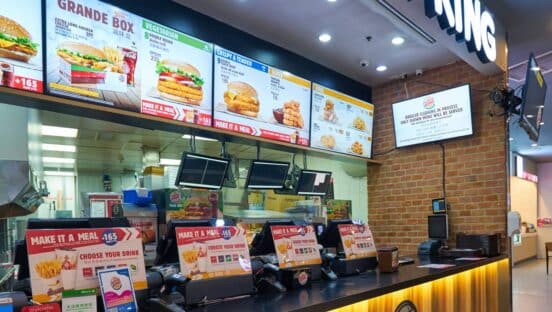The key to optimizing restaurant sales and profits is maximizing customer throughput. This can be accomplished by back-of-house improvements such as menu simplification, kitchen efficiency design, equipment upgrades, and technology. Another opportunity for improving throughput involves a front-of-house solution. Finding ways to reduce the amount of time it takes for customers to place their orders. A fast and cost-efficient way of reducing customer order times is by optimizing menu communications. This includes interior and drive-thru menuboards, kiosks, mobile apps, websites, and path-to-purchase communications along the entire customer journey.
Optimized menu communications can deliver multiple benefits, including: increasing average check; communicating value; and reinforcing brand positioning. These are noteworthy goals. But there’s a goal that’s often overlooked, but just as important as these other attributes. And that is to improve the clarity of the menu communications. Clarity is vital. It enables customers to easily navigate and comprehend the offerings and options, allowing them to quickly decide on what to order. Conversely, menu communications that lack clarity require customers to spend more time understanding the menu, asking questions of staff, and thinking longer about what they want to order. The end result is slower ordering times.
Our analysis of many menu communications projects has confirmed a strong correlation between clear menu communications and customer order time. Reduced order times equate to increased customer throughput, which in turn leads to increased sales and profitability.
So, How Do You Improve the Clarity of Communications?
Identify opportunities. The first step is to identify the opportunities for improvement. What are the issues with the current menu communications? Here’s where customer research is crucial. Conduct an attitudes and usage study to learn from your customers where the troubles are. How do they use the menu communications? What do they have trouble understanding? Why?
Simplify the menu. Simplifying the menu can also improve customer ease and speed of ordering. In this case, a TURF analysis can be particularly useful. TURF (an acronym for Total Unduplicated Reach and Frequency) can identify how the current line-up of menu options can be streamlined without negatively impacting customer satisfaction.
Improve ease of navigation. Another area to consider is how easy (or difficult) is it to navigate the menu. Thinking like a customer will help you speed up navigation. Is the design in sync with how customers order a meal? Consider the logical sequence of how to order a meal: First, what do I want to eat; what sides should I consider; what beverage shall I have;? An optimized layout would take into consideration how the customer places an order.
Leverage the menu’s “hot-spots.” Menu “Hot-Spots” have been determined through years of King Casey’s research. We know that these hot-spots are where customers tend to look first and most frequently, and vary depending upon the menu vehicle (interior or drive-thru menu, etc.). The hot-spot is where your highest-priority menu categories should be placed. Customers will find them faster. We also know that when menu items within categories are listed in descending order of sales, the items that are ordered most frequently are at the top of the listing and can be found that much faster.
These are the pillars of a sound and effective menu strategy that will improve the clarity of communications.
Tom Cook is a Principal of King-Casey. Established in 1953, King-Casey is a restaurant and foodservice business improvement firm. King-Casey provides strategic menu optimization advice and a range of services to help clients manage overall food and beverage offerings affecting their positioning, reputation, and business growth. For information, visit www.king-casey.com or contact Tom Cook at 203/571-1776 or email tcook@king-casey.com











